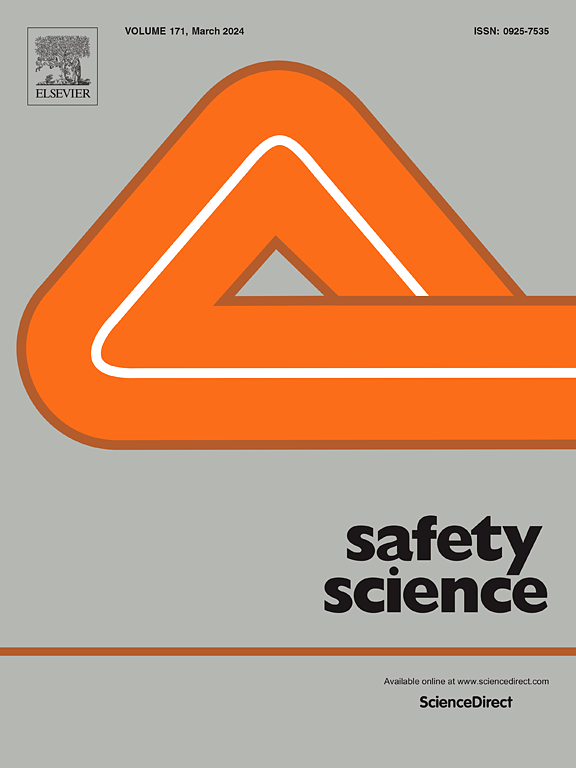An experimental study on gait characteristics and walking speed of individuals under the combined effects of heel and trim
IF 5.4
1区 工程技术
Q1 ENGINEERING, INDUSTRIAL
引用次数: 0
Abstract
The individual movement characteristics in a ship’s inclination environment are of great significance for expanding, supporting, and validating existing ship evacuation models, simulation software, and enhancing evacuation capabilities. This study, based on a six-degree-of-freedom ship platform, conducted walking experiments with individuals aged 30–50 under single-angle inclination as well as combined heel and trim. Individual walking speeds and gait parameters were extracted based on movement trajectories. The experimental results showed that as the inclination angle increases, the individual walking speed decreases, especially when the inclination angle reaches 15°, where the walking speed significantly declines. When the heel and trim angles exceed 15° respectively, individuals are unable to maintain a normal walking speed. Step length, step time, and step width are key gait parameters directly affecting walking speed. Step length shows a significant positive correlation with movement speed, while step time and step width exhibit a negative correlation. The relationship between step width and walking speed is relatively weak. This study provides reliable data support for a deeper understanding of individual movement characteristics in ship inclination environments.
脚后跟与脚掌共同作用下个体步态特征与行走速度的实验研究
船舶倾斜环境下的个体运动特性对于扩展、支持和验证现有船舶疏散模型、仿真软件,提高船舶疏散能力具有重要意义。本研究以六自由度船舶平台为基础,对30-50岁人群进行了单角度倾斜和足跟与侧倾结合的步行实验。基于运动轨迹提取个体行走速度和步态参数。实验结果表明,随着倾角的增大,个体行走速度下降,尤其是当倾角达到15°时,个体行走速度明显下降。当脚后跟和脚掌夹角分别超过15°时,个体无法维持正常的行走速度。步长、步长时间和步宽是直接影响步行速度的关键步态参数。步长与移动速度呈显著正相关,步长与步宽呈显著负相关。步宽与行走速度的关系相对较弱。该研究为深入了解船舶倾斜环境下的个体运动特征提供了可靠的数据支持。
本文章由计算机程序翻译,如有差异,请以英文原文为准。
求助全文
约1分钟内获得全文
求助全文
来源期刊

Safety Science
管理科学-工程:工业
CiteScore
13.00
自引率
9.80%
发文量
335
审稿时长
53 days
期刊介绍:
Safety Science is multidisciplinary. Its contributors and its audience range from social scientists to engineers. The journal covers the physics and engineering of safety; its social, policy and organizational aspects; the assessment, management and communication of risks; the effectiveness of control and management techniques for safety; standardization, legislation, inspection, insurance, costing aspects, human behavior and safety and the like. Papers addressing the interfaces between technology, people and organizations are especially welcome.
 求助内容:
求助内容: 应助结果提醒方式:
应助结果提醒方式:


